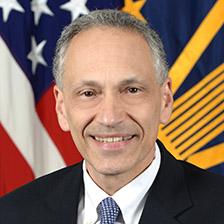Nuclear priorities for the Biden administration
FORWARD DEFENSE
ISSUE BRIEF RELEASE
How can the administration of President Joseph R. Biden both address the deteriorating international security environment and follow through on campaign promises to reduce the role of nuclear weapons? Former nuclear deterrence policymakers John R. Harvey and Robert Soofer, from Democratic and Republican administrations, respectively, contend in this issue brief that the Biden administration can address the increasing nuclear threat to the United States, meet its commitment to reduce the role of nuclear weapons, and maintain bipartisan support for US nuclear policy.
The growing challenges to US nuclear strategy and policy
The US nuclear arsenal is aging, and, although much-needed replacements are under way, the modernization plan leaves little room for error. Russia, China, and North Korea are all expanding and modernizing their nuclear arsenals, posing a threat to the United States and its allies and partners. Conventional conflict with any of these states also remains a possibility, which could carry the risk of nuclear war. Furthermore, the president made campaign pledges and early commitments in the Interim National Security Strategic Guidance to “take steps to reduce the role of nuclear weapons in our national security strategy.”
Key recommendations
In this context, this paper argues that there is a narrow but plausible path forward. To fulfill this narrow path, this issue brief offers seven key recommendations regarding US nuclear strategy, policy, and force posture:
- Maintain a nuclear triad and modernize all three legs, associated nuclear command and control, and supporting nuclear infrastructure.
- Develop options that take into account China’s rapid buildup of, and quantitative improvements in, its strategic nuclear forces.
- Continue with the development and acquisition of the nuclear-armed sea-launched cruise missile (SLCM-N).
- Enhance homeland missile defenses to keep pace with the North Korean nuclear threat.
- In considering changes to US declaratory policy, reject “sole purpose” and “no first use.”
- Increase conventional weapons programs that could provide some modest capability to hold at risk targets that otherwise would require nuclear attack.
- Engage in serious arms control and strategic stability dialogues with Russia and China, each bilaterally, which may consider further limitations on all nuclear weapons.
This is an approach that seeks to maintain bipartisan support by combining deterrence with arms control to reduce nuclear dangers.
As this brief suggests, the president can try to reduce the role of nuclear weapons by taking steps to ensure the conditions are such that nuclear weapons do not come into play. This means maintaining a strong nuclear force to deter challenges at the outset, exploring the integration of nuclear with other nonnuclear capabilities that may help prevent conventional wars from escalating to nuclear wars, protecting the nation against rogue-state ballistic missile attack, and re-energizing arms control and other nuclear risk-reduction processes.
About the authors

Dr. John R. Harvey
Former Principal Deputy Assistant to the Secretary of Defense for Nuclear and Chemical and Biological Defense Programs, 2009-2013

Dr. Robert Soofer
Former Deputy Assistant Secretary of Defense for Nuclear and Missile Defense Policy, 2017-2021
Subscribe
Sign up for updates from Forward Defense to hear the latest on the trends, technologies, and military challenges shaping tomorrow.

Forward Defense, housed within the Scowcroft Center for Strategy and Security, generates ideas and connects stakeholders in the defense ecosystem to promote an enduring military advantage for the United States, its allies, and partners. Our work identifies the defense strategies, capabilities, and resources the United States needs to deter and, if necessary, prevail in future conflict.
Image: 120812-N-GU530-017 STRAIT OF JUAN DE FUCA, Wash. (Aug. 12, 2012) The Ohio-class ballistic missile submarine USS Nebraska (SSBN 739) prepares to conduct a personnel transfer as it returns to its homeport of Naval Base Kitsap-Bangor, Wash. (U.S. Navy photo by Lt. Ed Early/Released)